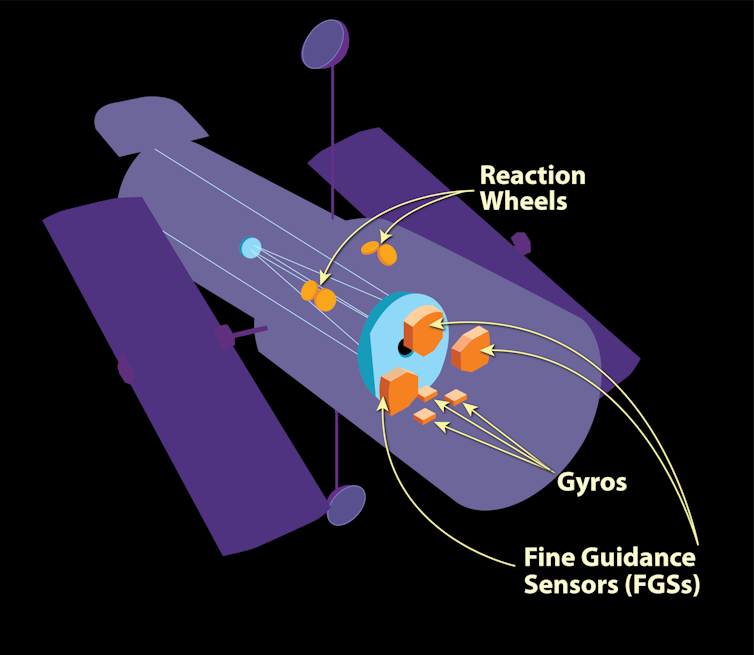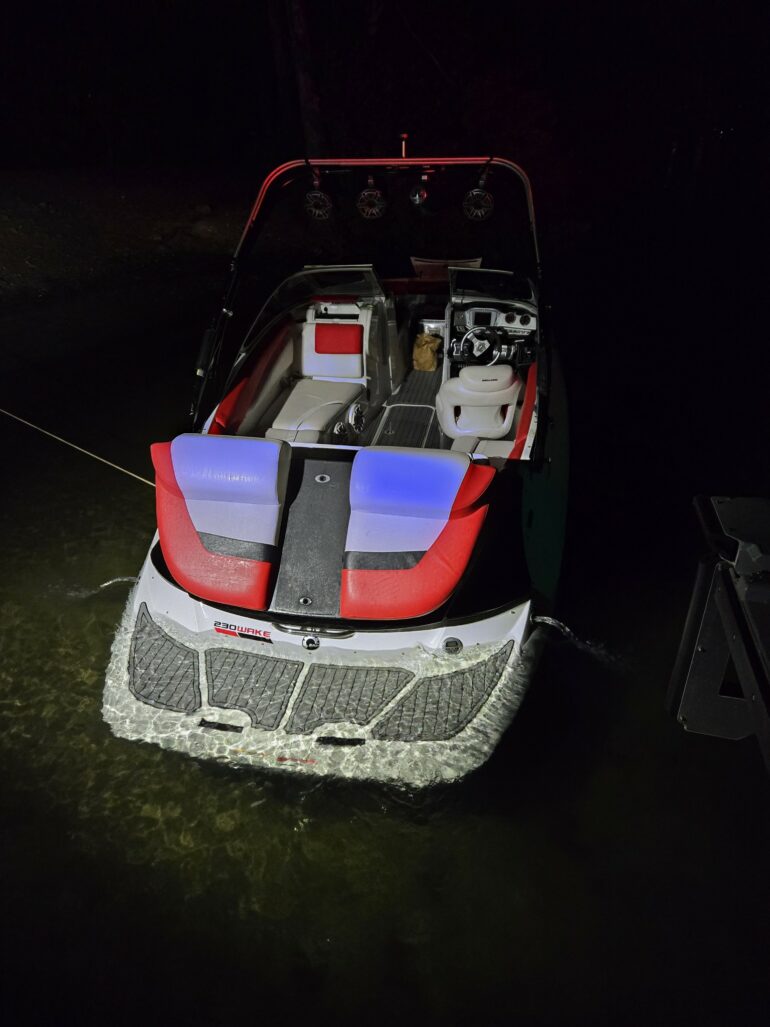Imagine keeping a laser beam trained on a dime that’s 200 miles away. Now imagine doing that continuously for 24 hours, while riding a merry-go-round. Seem difficult? Well, that’s basically what the Hubble Space Telescope does.
After months of technical issues, NASA announced June 4 that Hubble would shift into one-gyroscope mode. This essentially means that the telescope will have to rely on just one of the several gyroscopes – devices that measure an object’s orientation in space – it normally uses to track and follow objects in space.
Named after astronomer Edwin Hubble, the Hubble telescope launched in 1990 into low Earth orbit. Here, it’s above Earth’s atmosphere, which interferes with the observations from Earth-based telescopes. During its three decades of operation, it has provided us with stunning pictures of distant galaxies and allowed scientists to look closer to the beginning of the universe.
Hubble takes clear, high-resolution pictures of stars billions of light years away. To collect enough photons – light “particles” – for a high-quality picture, it essentially acts as a very low-speed camera. It keeps its aperture – that is, the opening in the lens that lets light pass through – open for up to 24 hours to take a single picture.
Anyone who has taken a photo at a low shutter speed knows how difficult it is to avoid ending up with a blurry image. Hubble takes this to an extreme. It needs to stay pointed at the same distant point in space with an accuracy within a few milliarcseconds – where one milliarcsecond equals one 3,600,000th of a degree – for up to 24 hours. And it needs to keep this accuracy while orbiting the Earth at 17,000 miles per hour (27,000 kilometers per hour) through extreme heat and cold.
To keep track of its target and generate clear pictures, Hubble uses what aerospace engineers like me call attitude control systems. All spacecraft and aircraft have an attitude control system to help them point in the right direction.
What’s a gyro, anyway?
An attitude control system consists of a suite of sensors measuring the orientation of the spacecraft, a set of actuators – thrusters, reaction wheels or control moment gyroscopes – that move the spacecraft around, and a flight computer. The flight computer takes the measurements from the sensors and generates the commands for the actuators.

The gyros work in tandem with fine guidance sensors and reaction wheels to control the telescope’s orientation in space.
NASA/STSci
A gyroscope is a device that measures an object’s attitude, or orientation in space. In other words, it measures how much the object has rotated from some fixed point. For Hubble to know where it’s pointing to take a picture, it has to know where it is in space. It needs at least three gyros – one per axis.
Hubble initially had six gyros: three main ones and three more as extras. But after more than 30…



